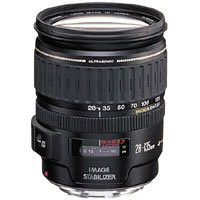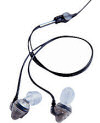[via BetaNews]
![]()
Ray Ozzie, former CEO of Groove and now, CTO at Microsoft, has started a new blog, his third one :-)


So, some news and updates concerning the coming conference Les Blogs 2.0 in Paris.
You can register here.
[via Tom Peters]
[…] Jack Welch was not the first CEO of GE, though to read Fortune in the ’90s one might have thought so. And Peter Drucker didn’t “invent” management. The Chinese probably did thousands of years ago—among other things, Sun Tzu’s roughly 2,500-year-old The Art of War is a full-blown “management” text. So, too, Machiavelli’s The Prince. And Frederick Taylor’s century-old The Principles of Scientific Management.
But Peter Drucker did arguably (1) “invent” modern management as we now think of it; (2) give the study and craft of management-as-profession credibility and visibility, even though biz schools like Harvard had been around for a long time; and (3) provide a (the first?) comprehensive toolkit-framework for addressing and even mastering the problems of emergent enterprise complexity.
And he did something else incredibly important: He popularized the study of-appreciation of modern management. Doubtless Mr Drucker would have been appalled to be described as a “popularizer”—after all, that was one of his abiding and biting criticisms of me. But the truth is that, though his consulting was carried out in the stratospheric confines of CEO-world, his books and articles were very comprehensible and accessible […]
Since about 3 years now, I am also drinking some grappa from time to time, which was absolutely not my preferred “digestif” – I like very much Cognac and Bas-Armagnac. We have to talk about these two beverages in the near future ;-)
I received a great grappa, have a look at the color! Although it titrates (correct word?) 42%, you haven’t got the touch of the strong alcohol, but just the fruit. Exceptional!

Drink moderately and safely. Enjoy your alcohol!
I got a Canon EOS 20D since April 2005, completed by an ultrawide-angle lens, the Canon EF 17-40 f/4.0L USM. This lens is absolutely great, but it is an ultrawide-angle, and sometimes you need a more flexible lens, which you can use as a zoom, for example. After some on-line researches (how did we realize that *before* the web??), I decided myself for a Canon EF 28-135 f/3.5-5.6 IS USM.

The rule of thumb to get crisp photos without image stabilization is that your shutter speed should not be longer than 1 over your focal length. So if you are taking a picture zoomed in at 135mm, your shutter speed needs to be 1/135 sec or faster, and since no camera I know of has a 1/135 setting, that means going up to 1/160 sec (on cameras with stops in 1/3 increments) or faster. The image stabilizer means that you can go 2 f-stops slower than you normally could using the rule I just explained. So if you’re shooting at 135mm and you have the IS switched on, you can shoot at 1/40 sec instead of 1/160 sec. That means four times as much light goes past the shutter, or that you can get the same quality results with 1/4 of the ambient light you would normally need.
(1600 ISO, 1/8s, f4.0)
[via BetaNews]
 A new version (v1.42, 27.3 MB) of K-Lite Mega Codec Pack was released. As usual, this audio and video codecs and players package contains all the things you need in this field (incl. a QuickTime and RealTime alternatives which are running greatly). All for free, very good packaged, super easy to install and to update. A *must* have.
A new version (v1.42, 27.3 MB) of K-Lite Mega Codec Pack was released. As usual, this audio and video codecs and players package contains all the things you need in this field (incl. a QuickTime and RealTime alternatives which are running greatly). All for free, very good packaged, super easy to install and to update. A *must* have.
K-Lite Codec Pack is a collection of codecs and related tools. Codec is short for Compressor-Decompressor. Codecs are needed for encoding and decoding (playing) audio and video. The K-Lite Codec Pack is designed as a user-friendly solution for playing all your movie files. With the K-Lite Codec Pack you should be able to play all the popular movie formats and even some rare formats.
The K-Lite Codec Pack has a couple of major advantages compared to other codec packs:
- It it always very up-to-date with the latest versions of the codecs.
- It is very user-friendly and the installation is fully customizable, meaning that you can install only those components that you really want.
- It’s easy to make an unattended installation.
- It has been very well tested, so that the package doesn’t contain any conflicting codecs. It tries to avoid potential problems with existing codecs and even fixes some problems.
- It is a very complete package, containing everything you need to play your movies.
- There are different packages. From small to extra-large.
[via Bloomberg]
Peter Drucker, one of the most significant contributor to the concept of modern management, has died. He was 95. Peter Drucker is impacting us all in the way we are doing business today.
I like particularly one of his book, Management challenges for the 21st century, worth a read!
No single person has influenced the course of business in the 20th century as much as Peter Drucker. He practically invented management as a discipline in the 1950s, elevating it from an ignored, even despised, profession into a necessary institution that “reflects the basic spirit of the modern age.” Now, in Management Challenges for the 21st Century, Drucker looks at the profound social and economic changes occurring today and considers how management–not government or free markets–should orient itself to address these new realities.
Drucker sees the period we’re living in as one of “PROFOUND TRANSITION–and the changes are more radical perhaps than even those that ushered in the ‘Second Industrial Revolution’ of the middle of the 19th century, or the structural changes triggered by the Great Depression and the Second World War.” In the midst of all this change, he contends, there are five social and political certainties that will shape business strategy in the not-too-distant future: the collapsing birthrate in the developed world; shifts in distribution of disposable income; a redefinition of corporate performance; global competitiveness; and the growing incongruence between economic and political reality. Drucker then looks at requirements for leadership (“One cannot manage change. One can only be ahead of it”), the characteristics of the “new information revolution” (one should focus on the meaning of information, not the technology that collects it), productivity of the knowledge worker (unlike manual workers, knowledge workers must be seen as capital assets, not costs), and finally the responsibilities that knowledge workers must assume in managing themselves and their careers.
 The Drools project, a well-known open source Java business rules engine, will join JBoss.
The Drools project, a well-known open source Java business rules engine, will join JBoss.
Drools is a Rules Engine implementation based on Charles Forgy’s Rete algorithm tailored for the Java language. Adapting Rete to an object-oriented interface allows for more natural expression of business rules with regards to business objects. Drools is written in Java, but able to run on Java and .Net.
Drools is designed to allow pluggeable language implementations. Currently rules can be written in Java, Python and Groovy. More importantly, Drools provides for Declarative Programming and is flexible enough to match the semantics of your problem domain with Domain Specific Languages (DSL) via XML using a Schema defined for your problem domain. DSLs consist of XML elements and attributes that represent the problem domain.
The addition of Drools represents another critical step in the evolution of JEMS as the Open Source Platform for SOA (Service Oriented Architecture). With Drools, JBoss is again demonstrating its commitment to bring a cohesive open source middleware platform to the mass market. Incorporation of the Drools rules engine into JEMS will allow organizations to easily customize their products and service offerings using business rules that can be applied across an SOA based on actions, events and historical activities.
Thx Nick ;-)
 I have decided for a while to buy the Shure E2c earphones. Really great, although you are a bit ridiculous when you try to plug correctly these headphones :-)
I have decided for a while to buy the Shure E2c earphones. Really great, although you are a bit ridiculous when you try to plug correctly these headphones :-)
Great to see that Russell is also a fan of the Shure earphones. He decided himself for the E3c series, have a look at his review. Quite similar results, pros & cons as my own experience.
 As already mentionned in one of my post on October 23, we are invited to talk about our case in Moscow at the end of November. The program and speakers are updated. Have a look at insuranceforum.ru for more detail.
As already mentionned in one of my post on October 23, we are invited to talk about our case in Moscow at the end of November. The program and speakers are updated. Have a look at insuranceforum.ru for more detail.
I hope we will have some good local support concerning the lamguage/translation :-)
That is a *real* foreign language. As an example:
Дидье Бек, директор E-Center solutions Helvetia Patria Group, Швейцария